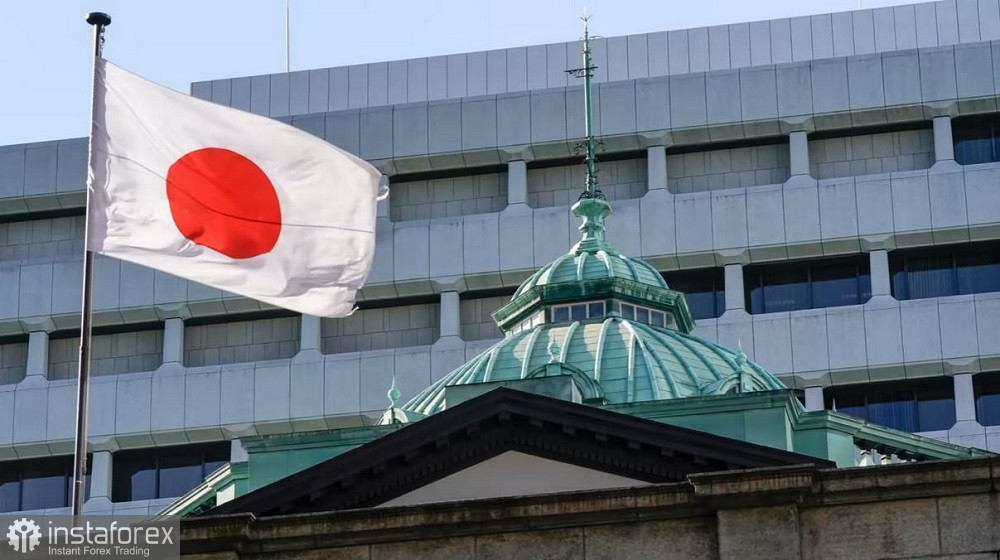The Bank of Japan today concluded the results of its latest meeting, which is the second-to-last meeting of the year. The results turned out to be quite contradictory. On one hand, the regulator abandoned a strict upper limit for the yield on government bonds. On the other hand, the central bank assured market participants of its commitment to an accommodative policy.
Traders interpreted these results unfavorably for the Japanese yen: the USD/JPY pair shot up, rising more than 140 points in just a few hours. The price again found itself above the notorious 150 level, which acts as a "red flag" for the Japanese government. Therefore, despite the current upward momentum in the pair, it is not advisable to trust long positions. The risks of currency intervention will increase with every point the USD/JPY price rises above the 150.00 target.
Obviously, at some point, buyers of the pair will take their profits, after which the initiative will be taken over by sellers. Similar situations occurred several times in October. The pair tested the resistance level at 150.00 multiple times, driven by rising Treasury yields and/or increased risk-off sentiment in the markets. However, each time, the price returned, even without intervention by Japanese authorities.

It can be assumed that events will unfold according to a similar scenario this time. There are currently no significant reasons for a bullish trend. In my view, the current reaction by traders is emotional. Once the emotions subside, the pair is likely to return to its familiar price range of 149.00 to 150.00.
But let's go back to the results of the October meeting. The Japanese regulator has decided to adopt a more flexible approach to fluctuations in the yield of 10-year government bonds. In other words, the central bank has redefined the concept of the YCC ceiling, allowing for greater "elasticity." According to the decision, the central bank will no longer consider the "1.0%" target as a rigid limit for JGB yields but rather as a reference point.
The Bank of Japan left the other parameters of its monetary policy unchanged: the short-term deposit rate for commercial banks remains at -0.1% per annum, and the target yield for 10-year government bonds remains around 0.
It is also worth noting that the Japanese regulator has revised its macroeconomic forecasts today. In particular, the central bank raised its inflation forecast for the current fiscal year, which will end in March 2024. According to the updated data, the core consumer price index (excluding fresh food prices) is expected to rise by 2.8% in this fiscal year, while the previous forecast published in July projected a 2.5% increase. In the next fiscal year, inflation is expected to remain at 2.8%, whereas the previous macroeconomic forecast anticipated a decrease to 1.9%.
Commenting on the results of the October meeting, Bank of Japan Governor Kazuo Ueda noted that the key reasons for revising the inflation forecast are the rise in the oil market "and a longer-than-expected effect of cost pass-through."
It's worth recalling that in one of his interviews, Ueda stated that the central bank might reconsider its ultra-loose policy in favor of tightening it, but only when it realizes that it is close to achieving the goal of sustainable inflation at the two percent level. Considering the updated macroeconomic forecasts and the latest data on inflation growth in Japan (CPI has stagnated around the three percent mark), it can be assumed that the Bank of Japan won't be considering changes to its monetary policy any time soon. Today's decision for a more flexible yield curve control policy should not be seen as a "harbinger" of more hawkish decisions (e.g., ending the negative rate).
Moreover, today's rhetoric of the Bank of Japan's Governor did not contribute to a hawkish sentiment. He stated that the central bank will continue to patiently ease its monetary policy under YCC "to support economic activity and create conditions for more active wage growth."
Thus, the overall conclusions regarding the current situation are contradictory. On the one hand, today's meeting cannot be considered "routine" as the regulator made an unexpected decision, taking another step away from the policy of yield curve regulation. On the other hand, the central bank reassured the markets that it will continue to implement its ultra-loose YCC. As a result, the scales tipped in favor of the yen, with the USD/JPY pair surging upwards and currently testing the resistance level at 150.70 (the upper Bollinger Bands line on the D1 timeframe).
Despite the strong and impulsive price rise, long positions on this pair appear highly risky. It's worth recalling events from a year ago (when the pair plummeted by several thousand pips in response to a currency intervention) or from a month ago (when the pair sharply dropped by 300 pips on rumors of an intervention). In all these described cases, the trigger was the price rising above the 150.00 level. Therefore, it is currently most advisable to adopt a wait-and-see position on this pair. Once the upward momentum starts to wane, selling positions will become relevant again. Given the history of this issue, there is no doubt that Japanese authorities will respond to the depreciation of the national currency in the near future, either verbally or through "real" currency intervention.





















